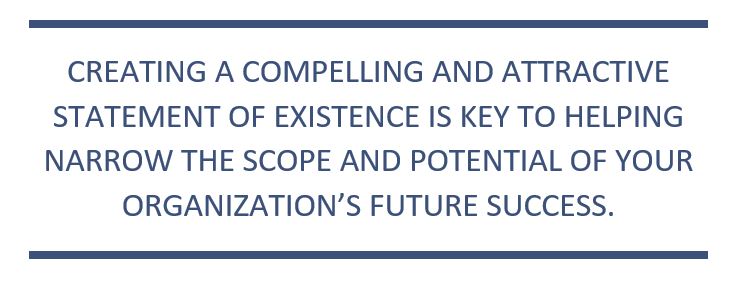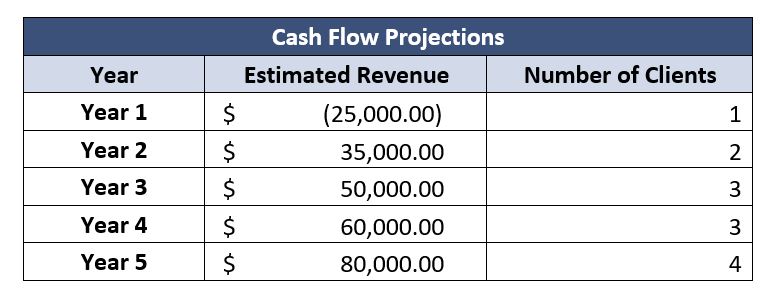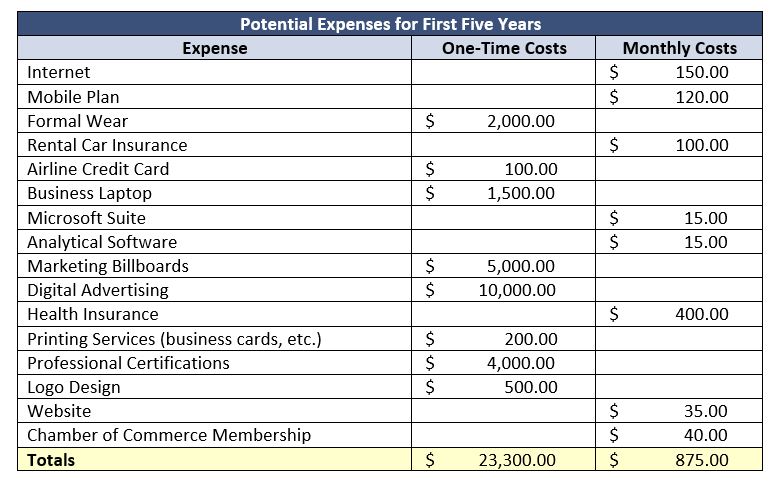Insight Paper January 8, 2020
How to Market. How to Sell.
Marketing and Sales remain the primary enigmatic business skillsets that drive individuals to fortune and organizations to success.
The grandiose marketing and sales gurus continue their everlasting corruption on formulaic and effective main street tactics. Self-help and “business” literature remains a lucrative genre while speaking engagements from personable, affable caricatures of individuals haunts the halls of regional hotels promising sales advice and marketing expertise that will break “milestones” and “records”. There are some things to be learned from these preachers, albeit it’s limited in vision and pragmatism. The individuals often have immense personalities and charismatic drive that, when weaponized, entice a listener to capture and hone on every word. While the ethical and moral element of this enterprise has always been in doubt by many industry veterans, it will remain a constant teachable companion for most. However, how one markets or sells is not isolated in one speaker’s advice or one sales convention’s lavish pitch speech, it is primarily an art of consistency – an art that is found not in the creative library of the mind but one of day-to-day business adaptation and practice. The strategies and methods employed to both market and sell your personal or organization’s assets or services is learned through a constant state of repetition and failure. There is no hidden solution that you will find browsing the web, within a book, or in a ballroom at the Marriott.
The truth is that there are those whose natural affinity for marketing and selling is complementary to their personality and ambition. Then, there are those whose reservedness and prioritization force them to endure years of trial and error before success, if any, is made within this art form. In some ways, it is similar to athletics. While practice can improve your skill and increase your potential, you are ultimately reigned in from playing professionally based on your body’s accompaniment to the sport’s needs, such as height for basketball or speed for running. However, being the “best” should never keep one from negating their ancillary potential. Within marketing and selling, one is often beholden to both and not exclusive to one or the other, in order to more substantially have an impact on their organization or institution’s bottom line. Even if not directly a marketer or salesperson, you are often employing the skillsets within these business domains unconsciously. Being aware of this is a major first step towards inhabiting a competitive marketing and selling mindset.


The goal of this article is to provide an outline for success to help ANYONE begin the process of building a foundation within the discipline of marketing and the world of sales. These key artifacts, activities, and strategies will help one to better prepare themselves or their organization for an initial, effective approach. Most of the suggestions require only time from the individual, while others may push for resourcing and monetary support. Eventually, there is only so much one can do without supplementing their sales and marketing tactics with additional financing or the burden of risk. However, until one is comfortable at that level, it is vital that they pursue some of the framework suggestions below to, at the very least, begin the process of thinking and acting like a marketer and seller.
MARKETING
Marketing is an often ambiguous and undefined field of corporate discipline whose role is overarching to that of brand management, public relations, advertising, sales, and growth/development strategies. For some organizations, marketing encompasses their entire public-facing and external persona while others may position marketing as a back-end quantitative discipline built on KPI advertising metrics/measurement and rigorous sales engineering research. Regardless of how one executes marketing within their organization, the fundamentals for establishing a marketing presence remain universally applicable. The approach should establish a marketing plan of action and outline several deeper areas of concentration. Once some of these recommendations are established, your marketing presence will more prominently exist in a position of advantage and possess the ability to cultivate competitive angles against your rivals.
To help the reader better understand where these marketing and sales lessons can best be incorporated, I have constructed a fictional startup consulting firm called Compensation Authority Experts (CAE). The company’s focus is on analyzing and investigating compensation and rewards structures within large organizations to more diligently and fiscally improve internal performance, incentivization, and retainment policies. However, our example company, CAE, can be applied to almost any service-oriented firm or organization. I am hoping by providing context through the CAE example, you can more accurately envision how the suggestion or recommended approach would be executed from a practical and exemplified scenario.
STATE OF BUSINESS PURPOSE
Creating a compelling and attractive statement of existence is key to helping narrow the scope and potential of your organization’s future success. If you focus too broadly in an area of domain, such as serving (A) financial services versus (B) serving financial services pay transaction ecosystems, it will be difficult to establish a lasting, influential brand that sticks out from the saturated, behemoth competition. If you are just starting out, it is even more critically important to distinguish the importance of your organization’s goals and focus, as it relates against legacy brands and competition. You want to capture and author language that explains the skills, services, and value that you provide while driving to where you see yourself (or your organization’s) positioned in the greater industry realm.
Below is an example of a business statement and purpose to set the standard for future marketing endeavors:
Compensation Authority Experts will be a world-class human capital consulting firm. Our firm has global and cross-industry leadership experience and knowledge to assist clients in analyzing their compensation structures, implementing rewards programs, driving recruiting cost-savings, and advising on learning and development strategies to retain an organization’s best talent pool. CAE will help leadership to divide and conquer by analyzing competitor compensation records, talent pool demand and opportunity, employee reward structure, and pay negotiation.
Through decades of transformation and executive-level expertise, our experts harness our knowledge to better prepare your organization to move into the future of globalized commerce, gig economy, work/life balance structures, and an increase in remote work prioritization. Through a more connected world, companies, non-profits, and other institutions will need more thorough and resilient research on where the best talent originates from and how that new talent is best utilized and retained. CAE can embed their experts with your decision-making teams, recruiting teams, or human resources experts to provide advisory and support in the form of strategic human capital operations.
Notice how the above example provides insight into specific domains and capabilities, while avoiding the generalistic doctrine of strategy consulting and expertise. Or, even more so, breaks down what areas within the practice area of human capital CAE is dedicated to and able to more expertly execute in.
ESTABLISH MARKETING OBJECTIVES
Once a business purpose or statement is constructed, it is critical to lay a proper foundation for objective creation. By aligning several goals and areas of focus, the organization can create benchmarks for early marketing progress and measurable actions for further exploration and advancement. The immediate objective should involve the capturing or attention solicitation of potential revenue streams. In our company example, the consulting firm will want to expend all effort into attracting the interest of clients. This can be done by performing several high-level areas of scope which includes: (1) Accumulating (or constructing) a list of potential revenue streams (clients/customers), (2) establishing brand in a niche area of responsibility to avoid industry bloat, and (3) drafting messaging materials to persuade clients and the greater public of the reputation for your organization.
Since the firm [CAE] will be rather niche in scope covering human capital compensation, one of the main objectives of our marketing would be to narrow down a list of potential clients by need. We would collect data and research reviews on corporations and organizations who have had historical difficulties in retaining talent or lack the necessary competitive pay structures to keep up with industry standards. This information may be gathered via relationships, online employee reviews and salary calculators (such as Glassdoor or Indeed), and news articles highlighting workplace staffing/leadership changes. In addition, memos covering talent shifting and new executive placements would help narrow down a potentially marketable candidate list of actively changing organizations. For example, maybe a new Chief of Human Resources has been hired. They are bound to make changes within their first couple years on the job. What better way to make an impression than hiring outside support to help position your internal teams and increase adaptation readiness. Ultimately, this beginning list is there to bolster confidence in the firm’s purpose and bolster reassurance in growth and marketing of CAE services.

After a client list is assembled, the next step would be focusing on brand image. The purpose of this is to elect a geographical area (most likely wherever the majority of the talent/employees reside) and begin the slow, methodical process of building a suitable brand. Regardless of how charismatic or inexpensive your services are, clients will want to see evidence that you have experts ready to assist and are believable as a credible, functioning organization. In addition, they may want to tie in their own brand culture or ethics and partner it with your organization’s value statements and purpose. This helps solidify and encourage a longer lasting work relationship. However, in order to construct this brand image, CAE would utilize tangible advertising, such as billboards or seminar sponsorship. It would be limited to a designated geographical area and include the logo and messaging of CAE. As the organization grows, we could shift our marketing budget to local newspapers and digital efforts that have the potential to reach wider audiences but are more costly in nature. Ultimately, the branding is not there to capture new clients but to establish persuasive credentials and a reputation to better accommodate sales and provide a more amicable selling process through other channels.
Lastly, the final step would include messaging. With a brand established and a client list to further investigate, we are in a position to take advantage of our marketing structure. Now, we have to set the tone and utilize our decades of experience and relationship skills to land the big whales – the lasting relationships. CAE would start by drafting the perils of poorly implemented traditional compensation structures then move to what the cost/benefit analysis of reorganizing (or rethinking) your organization’s potential salary/rewards program and how it positively impact your operations. To accompany our messaging, CAE would present past case studies showing results and new journey mapping showing hypothetical scenarios for each industry/size of company. This would be a great deal of effort but could help instill trust with the new client should they come on board and supplement future business development initiatives. The messaging isn’t solely about the way we communicate our firm’s purpose but also what we say to bolster our image.
Some early estimated financial dumps related to our marketing objectives:
- $500/year – Chamber of Commerce Membership
- $3,500/year – local billboards and event sponsorship
- $7,500/year – website and digital presence fees and contractor pay
COMPETITIVE ANALYSIS
This is affirmatively one of the more critical components of a marketing plan. Understanding where your firm/organization/company/yourself fits into the overall business environment is key. If you play with the big dogs and you are too small, you’ll be eaten alive. But, if you partner with other organizations or limit your sales scope to a tailored endeavor, you may come out distinguishable. Here are some steps you could take to perform a more comprehensive competitive analysis:
- Geography
Understanding where you want your base of operations is key and you should research the cost of living and local economic factors that may adversely impact your ability to succeed and grow an organization. - Accessibility
Is the geographic location accessible to the outside world and telecommuters? For example, what kind of transportation systems are in place for potential employees and is there a major airport or transportation methods nearby to inexpensively shuttle to client sites. You will want to better understand your office’s location and how it might influence your connection to client bases in major metropolitan areas, such as Chicago and New York, or emerging influential metropolitans, such as Houston and Atlanta. - Trending
Do people understand what you are selling and are they familiar with its value? If you must explain the service you are selling, then the client is already setting the tone of skepticism. How do people react to this industry and this area of focus? What are some historical case studies that are famous or well-known in the greater business populace, etc.? - Competition
How many other companies do the same thing I am doing or trying to do? Are there bigger and more well-funded organizations that scoop up most of the new business or is this a niche area of knowledge? You need to reign in the number of companies you will compete with and adequately analyze their external facing communications (website, public relations, social media, published research, leadership, etc.) which will provide key insight on their activities and areas of focus. Large multi-national organization employ heavy resourcing and personnel to drive new sales. This is a factor that all should be mindful of when negotiating a comparative strategy. - Pricing
To be competitive, you need to be pricing services and offerings correctly and with consideration. Although this is largely subjective and interpreted based on time-served or geography, you won’t want competitors destroying you at the checkout counter. - Response
Post-launch response is key. Once your organization is up and running or you begin branding the employees and your company’s expertise, what will the response be? There must be an action plan in place to deal with potential backlash and/or competition pivoting to overshadow your credibility, results, or presence. How do you follow through with a cold RFI (Reference for Information)?
In our example, CAE would take the expected approach of populating a list of local and high-profile competitors and then breaking them down quantitatively by detailed factors (gross revenue, employee size, locality presence, etc.). Having this extensive list constructed and available helps one to reference the competition’s activities periodically and gain a better understanding of the volume of threats at disposal. CAE would utilize a list of this nature in all business development, marketing, and sales endeavors while also pivoting this list as a potential revenue generation training tool.
TIMELINE
After the initial goals and strategic outline are solidified, the remaining steps for your marketing approach are best quantifiable in increments of progression and phasing. Your timeline could include establishment, spending, growth, and longevity for the first couple years of inception. By putting these theoretical timeframes on paper, you are envisioning both the potential reach and limitations associated with your organization. It is not uncommon for many new companies and organizations to fail at retaining profitability or a solid client/customer base for several years.
The example graphic below provides a perspective of how a potential start for a new organization or firm could operate in an ideal state.

CASH FLOW
One of the most difficult, but necessary requirements of a marketing approach is to try and design hypothetical scenarios for client and customer capture while aligning the expected costs of maintaining your organization’s marketing plan and health. By dictating cash flow projections or expense tables, your marketing budget will be better entrenched to deal with abnormalities and complement existing financial stretches of cost.
Cash flow will be one of the most difficult, if not the highest(complex), barriers to overcome when starting CAE. The business will only be able to succeed if it is able to pay myself (the owner) a livable wage without incurring substantial credit, debt, or overall risk. In addition, although I am motivated as the entrepreneur, I will have to take into consideration that bringing on additional employees and resources will require me to pay fair market pricing that covers salary (since they are educated professionals and not hourly wage earners), benefits, and allow for luxurious perks, such as paid time off and possible bonus pool contributions or 401K matching. This will eat into overall revenue streams. As a result, the first few years of CAE’s inception will be primarily a one or two-person team with the occasional hourly contractor to assist in specialized areas I am unfamiliar with.
CAE will be best positioned by adjourning itself into already established consulting engagements. By soliciting myself (the owner) as a potential subject matter expert within the compensation analytics domain, I can offer my services to already established consulting firms and be employed by them as an individual contractor. This will allow me to market my individual services from within the client ecosystem, further establish individual credibility, farm new leads, and continue the formalization of a legitimate professional network. While marketing myself as a contractor will pay a set wage, many of my [the owner’s] earnings will need to be reinvested into CAE’s marketing efforts, such as the billboards and online digital ads. Once considerable awareness is reached, CAE will land its first and primary client where a hopefully lasting relationship (6+ months) will occur. However, CAE takes into consideration that shorter client engagements will not necessarily assist the firm in growing so will wait until a one year plus engagement is won to warrant the hunting of a second future client base.

Key expenses, such as office leases and overhead employee costs, will be heavily limited in the initial years. When not working on-site or traveling for networking opportunities, CAE will work out of their domestic residences (telecommuting). CAE will be cautious to assume that the first and second year of the firm’s inception will not be revenue generating and may even operate at a net loss due to marketing/advertising expenses. However, this is expected when starting a new business and, as long as the owner can stomach the initial weakness, the long-term success could provide ample reward.
The graphics and tables below outline potential quantitative tools and visuals to drive an example understanding of cash flow. Breaking out cash injections and expenses, even at a proposed high-level, will help to draw comparisons to client and customer retention, in addition to scribing a budget for consideration.



CREDENTIALS & CREDIBILITY
Establishing a paper reputation will be one of the baseline pieces of evidence that will help your organization to “get in the door” or get a call back to continue discussions with a potential client. In addition, credentials help to establish your reputation in an industry sector and a networking circle as others will want to associate with your valued expertise and experiences for learning or affiliation purposes.
Formal Education
The first key gate will be to pass the educational benchmark. Many organizations and people (though this is slightly shifting in importance over the decades) still value formal education at the university level as a paramount indicator of future success and effort. By displaying undergraduate and graduate degrees, you are affirming your ability to handle intellectual workloads and push yourself mentally within an existing realm of academia, such as business studies or economics, or a more specific skill, such as change management or finance. In addition, the alumni brand assists in affirming relatability to your background and strengths. Even if the potential client did not attend your school or their target recruiting alumni, perhaps they also went to a Big 10 university, so they are familiar with the class workloads and collegiate life represented there. This collegiate relatability helps people to make a connection and establish a level of comfortability that cannot be replicated through raw first impressions.
Professional Certifications
Although formal education is critical, many job roles in 2019 are requiring very specific and tailored certifications. These certifications can cover fields ranging from project management skillsets to financial investment regulatory auditing. Regardless, achieving a certification is often no little task as some require significant monetary investment upfront while others may require multi-day arduous exams and needed preparation. Once the certification is granted, they sometimes require annual renewal or organization fees. However, if you achieve a lucrative and in-demand certification, it will guarantee future potential client conversations and further instill your educational credibility within a space. In addition, the classes and workshops that mirror the certification attainment approach have the potential to yield additional networking opportunities and professional relationships.
Examples could include:
- Certified Scrum Master (CSM)
- Certified Scrum Product Owner (CSPO)
- Project Management Professional (PMP)
- Financial Licenses (CFA, Series 7, etc.)
Research and Media
While education and certifications round up credibility, your reputation and knowledge are more thoroughly explored in the research and analysis you or your organization can produce. By showing key articles and insights you have written and adding on a few media appearances, you can show that you are an industry leader and not just a participant. Reaching out to trade journals, niche news websites, or media contacts can help a journalist meet their publishing quota and increase your brand image to further highlight yourself or your organization’s services. Think of it more in-line with a partnership than an exchange.
__________________________
As with most entrepreneurial endeavors, CAE will be under an immense amount of financial and operational weight within the first few years. Success, at the beginning, will largely originate from the company’s ability to capture two major clients, allocate marketing funds wisely and fiscally, and build credibility and strength within CAE and its employees through reputational or credibility means. However, this hardship will be overcome through careful and strategic planning. A timeline, proposed expense budget, credentialing focus, and a realistic client capture strategy will empower CAE (or your organization) to thrive and position itself as a leading, boutique professional services firm within the compensation and corporate rewards consulting space. Lasting reputation and dominion will largely be executed by its employees but also its founder’s willingness to take on risk and possessing the willingness to continue pushing forward.
SELLING
Sales and the act of selling, as we have touched upon previously, is more an art than a hard skill. It’s parameters and formulas for success are more stringently in-line with ambiguity than rigorous frameworks ready for execution. There is no one solution or method that will be a key to your success. Some say it’s a numbers game while others remark on the importance of a strategic, calculated approach. Externalities frequently come into play during a sales pitch. Unmeasurable variables, such as charisma or personality, help to lessen the exactness and preciseness of conquering the art of selling. However, with these thoughts ever present, and a consistent level of confidence in yourself or your organization’s delivery and reach, mastering the sale can be foundationally built upon several strategies and approaches.
To ensure your organization starts on the right footing, I will be focusing on a few, specific areas that remain present and domineering within sales methodology. Although there are many facets of a successful business, such as financing and recruiting, energy must be spent, instead, on the key areas below that drive sales (your primary revenue generator) and encompass sales best practices. Individuals could spend decades envisioning the best approach towards starting a business. In the end, however, there are always a few key indomitable steps that require the most attention.

For CAE, we will have to be an ideal example of a well-structured birthplace for employment, especially if we are going to be advising firms and organizations on how to structure their internal operations (more specifically, their compensation structures). Our sales strategy will be a critical and highly influential component of managing our brand’s image.
ESTABLISH CREDIBILITY
To even consider the task of selling, credibility should dominate your persuasiveness and appeal. By constructing an aura of credibility, whether it be through conversation or dictated on paper through words of eloquence, credibility goes a long way in establishing one’s perceived value or worth. People often judge oneself, based on an initial conversation or email. Credibility will help to dissuade concerns and project confidence in the sale from the forefront. Pay attention to overlooked skills, such as grammar and prose. Keep messaging brief, to the point, and (more importantly) persuasive.
RELATIONSHIP DIARY/NETWORKING
Some industries are very siloed so one bad referral can turn off a potential future business relationship or client. Getting in the door is key. By building a network of contacts, you will have a referral list from which you can reach out and stay in touch to capture new opportunities. Manage and format a record of contacts that stands the test of time. Use a personal list and don’t completely rely on a social media network, such as LinkedIn.
BRANDING
This will be a considerable area of effort and involve many facets of marketing. However, the brand is what helps promote the sale. As credibility is the brand of the individual, the brand of the organization establishes leniency towards executing the sale, giving more credence to one’s ability to make and enact a sale. The branding strategy should be effective but not intrusive or expensive. A mass marketing campaign will destroy the company’s finances. An ineffective branding approach will destroy the company’s reputation. One must tread cautiously within this domain.
CONVERSATIONAL RESEARCH
A significant, but often overlooked aspect of the sale is one’s ability to relate on a genuine level with their counterpart. Multiple steps and actions can be taken to emulate or relate to their contact, in order to better establish relations for an improved chance of a sale. This conversational overtone can take place through several different avenues. First, you could perform research on the background of the individuals. Their background tells a story from which you can connect similarities. Perhaps you grew up in the same area, knew someone that worked at one of their previous companies, or have the same non-professional interests, such as hobbies or volunteerism. Each of these pieces will help to show your commitment to knowing the person’s time is valuable. With an ever expanding online professional network scene and search engine capabilities, you can usually find bits of information about someone or where they have previously been employed through a brief internet search.
Secondly, if the individual or groups of individuals you are trying to sell to work in a particular field or specialty, why not dive deep into their industry for a few hours and discover the latest trends or media highlights that are currently plaguing or inspiring transformation within their industry. This knowledge will go a considerable way in not only establishing one’s acumen, but sparking future sales opportunities, as you learn more about the wants and need of a specific area of business. This is often a key determinant when skeptical contacts or an unestablished sale breaches failure. Sometimes relating and genuinely appealing to your target by showing passion in their field and interest in their background shows exemplary effort in truly caring about the individual’s problem.

As the leader of CAE, I have to affirm my intellectual strength and expertise in the service I am about to sell. Formal education through the means of an advanced degree and/or additional certifications in particular focus subjects or industry trends would go an increasingly long way of establishing the company’s knowledge base. Additionally, published research and thought leadership would help drive the understanding that myself and CAE are “active” participants and our continuous knowledge of the subject of compensation consulting is updated to current times and corporate trends. Lastly, I would want to create a public persona. Having a LinkedIn profile and a headshot on the company’s website would help put a face to the name and assist potential clients in building trust/reputation with my brand so they are free to find additional information online about CAE or myself post-conversation. Our brand will be our ability to publicize CAE’s experts and credibility. We want to show our educated, experienced, and approachable consultants on an industry-specific level. The first goal will be professional conferences while the next may be a billboard ad.

Marketing and selling are similar in retrospect, but so vastly different in mastery. If it were to be condensed into a more simplified level: marketing is the establishment of brand while sales is the continuance of that brand. Many individuals are either great with one or the other. It is rare you come across an individual that can make the distinction between the two fields while maintaining high-level performance in both. Ultimately, especially when starting a new company or promoting one’s own business, you don’t have to be an expert in either field. However, it is recommended you follow some of the formulaic steps outlined here to help strengthen the integrity of the organization’s purpose and exemplify effort to the greater world that you mean business.

